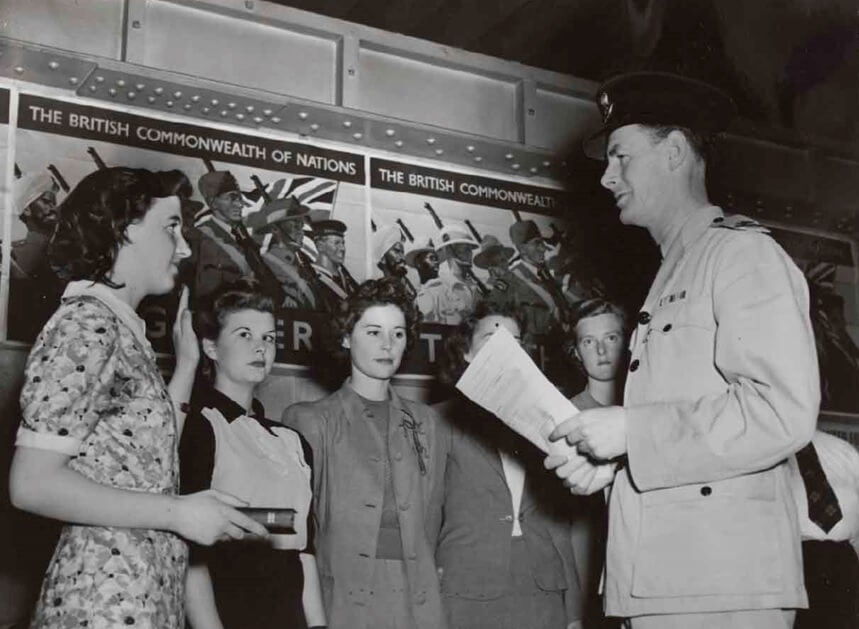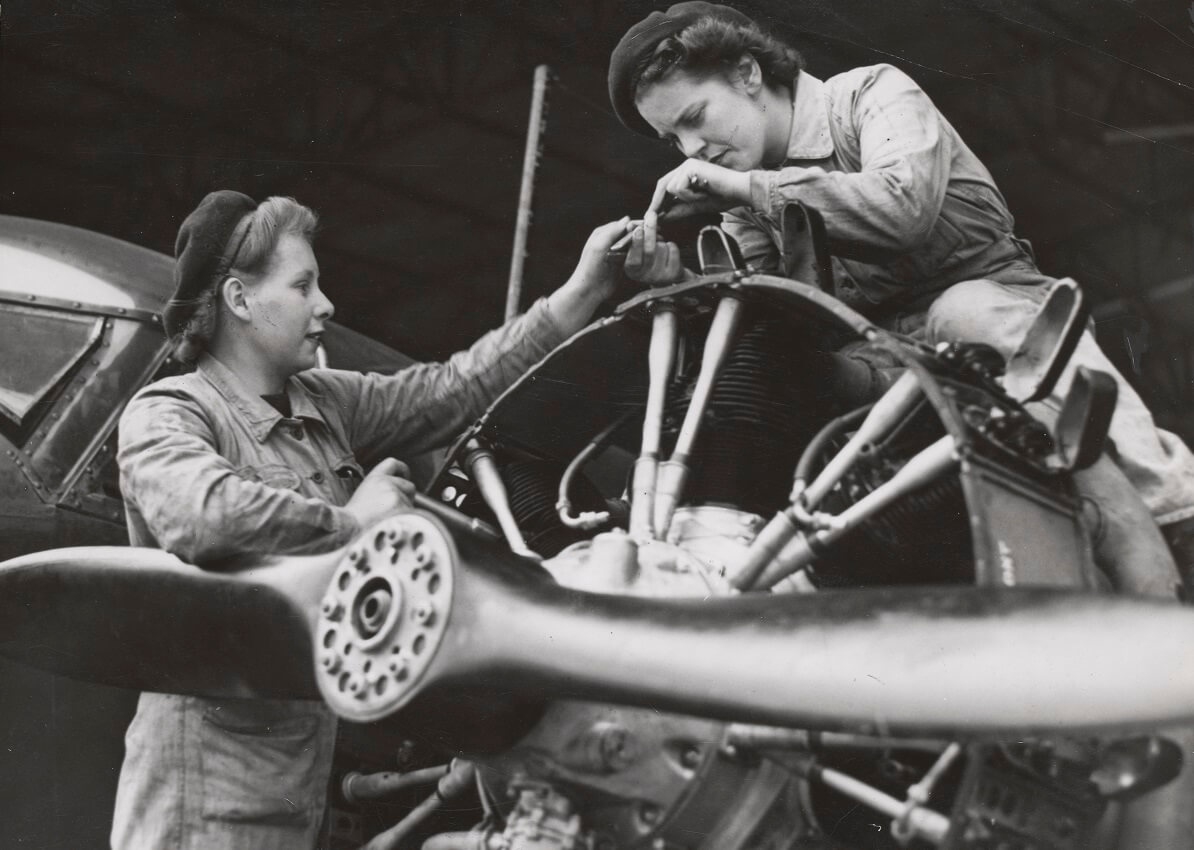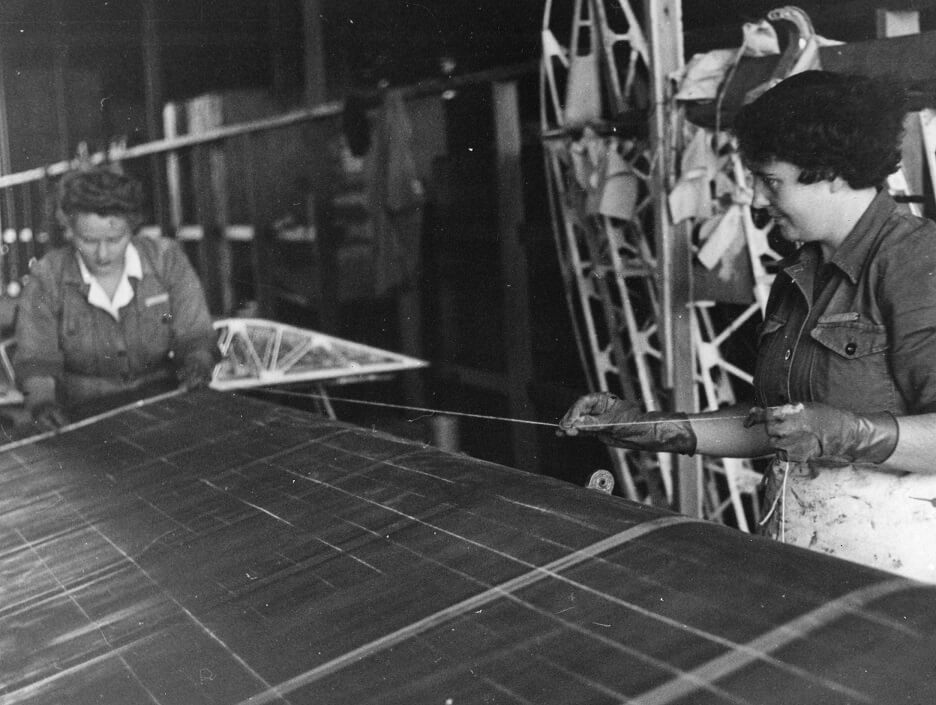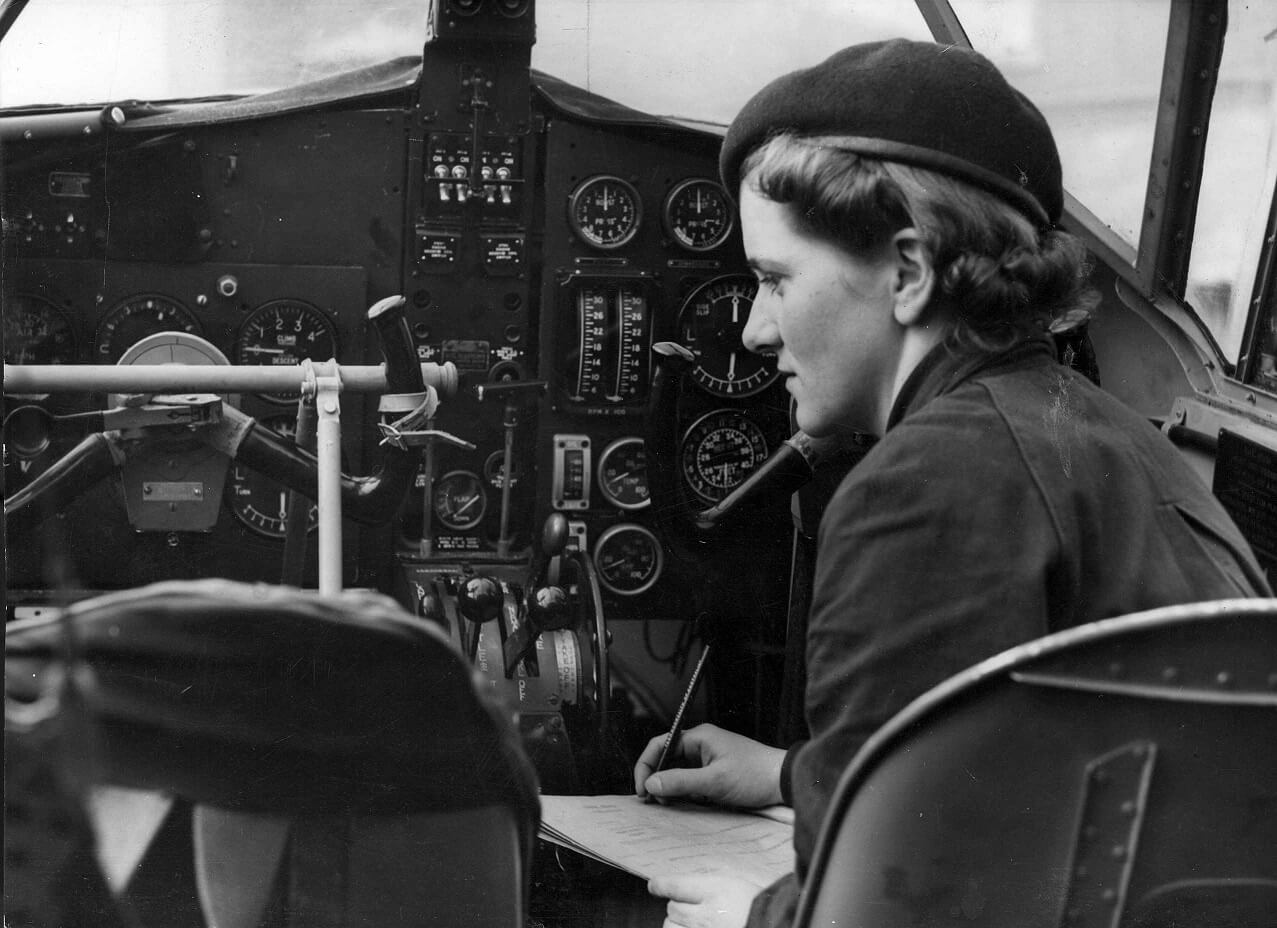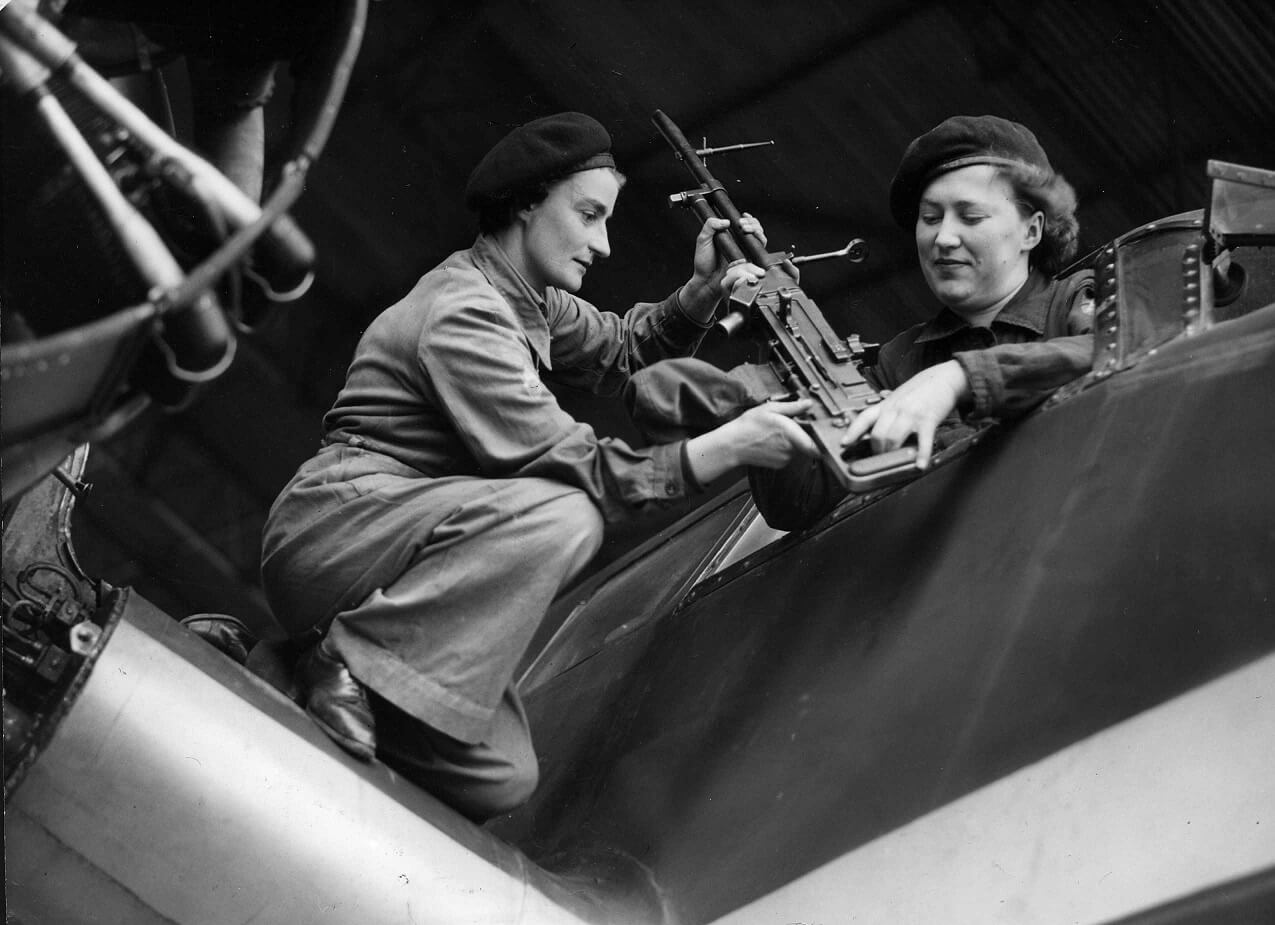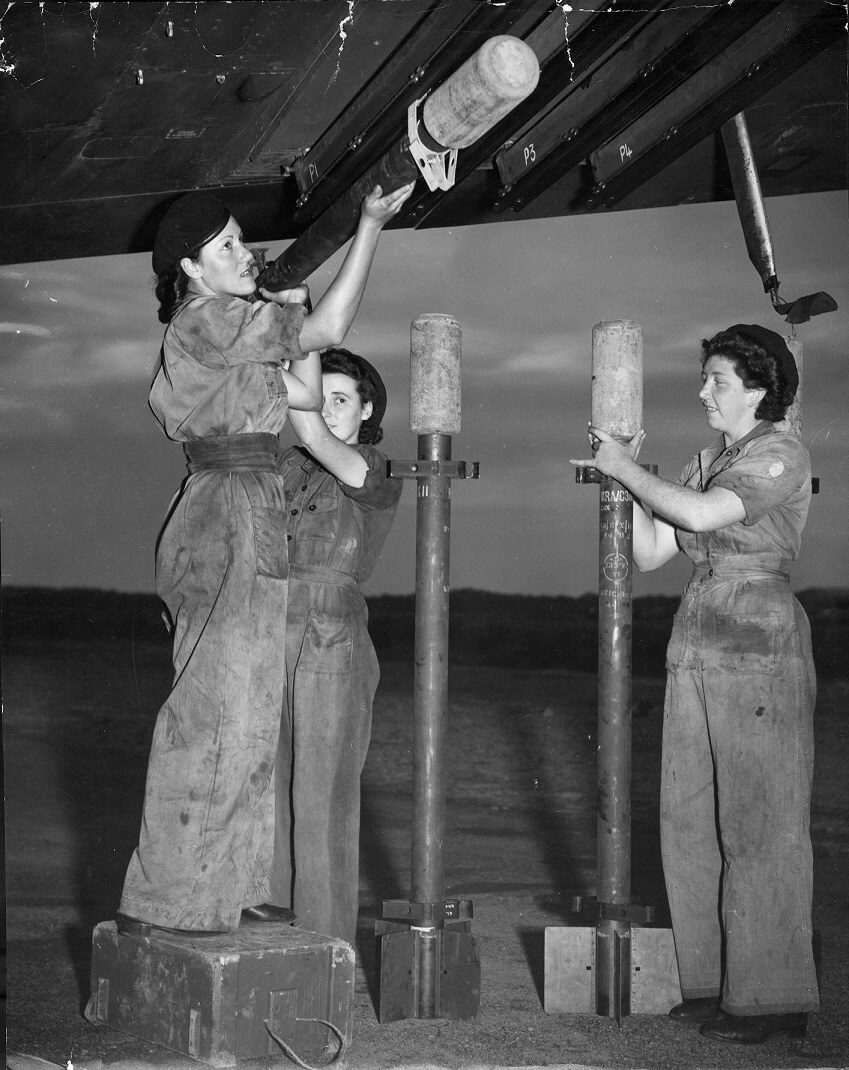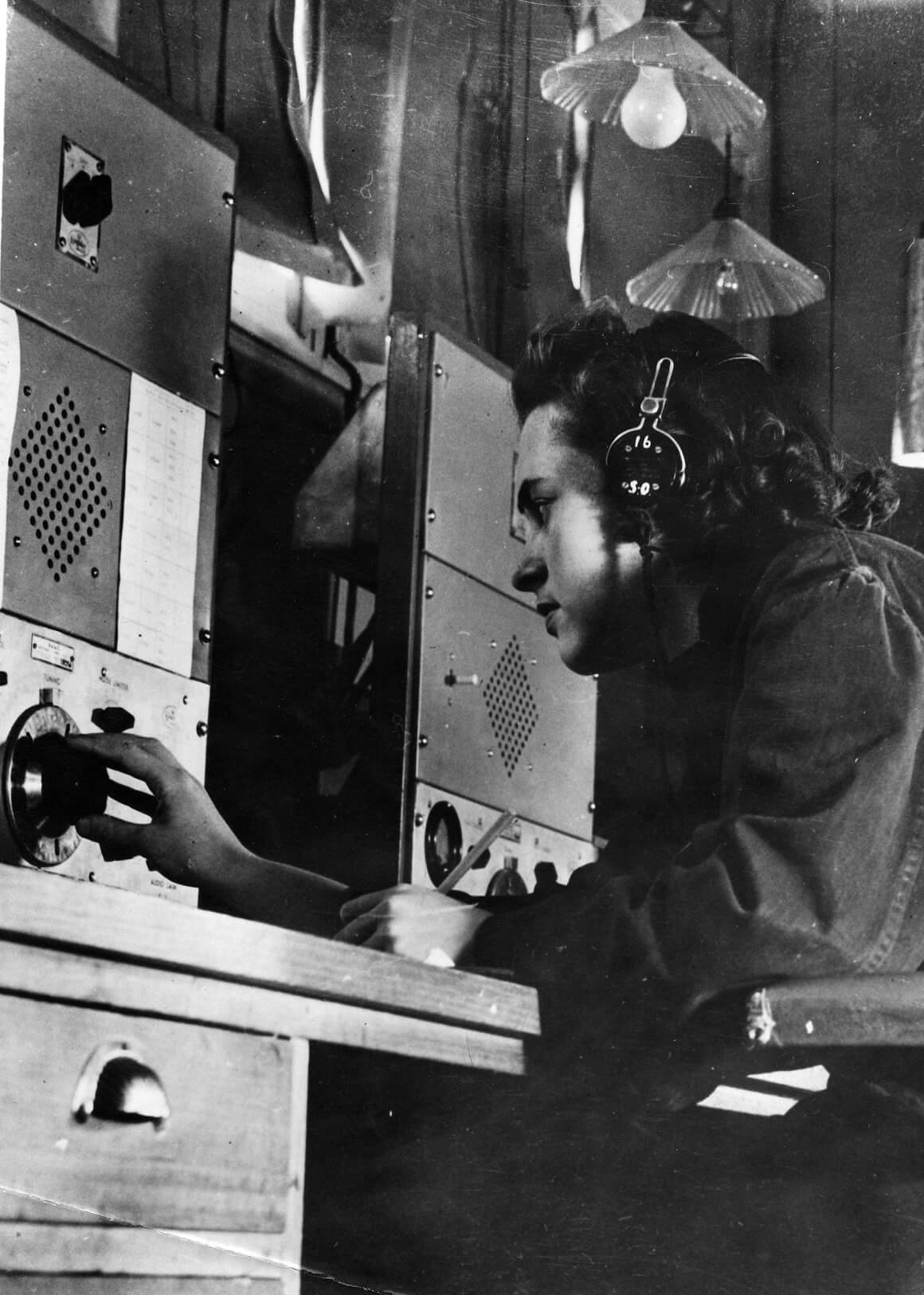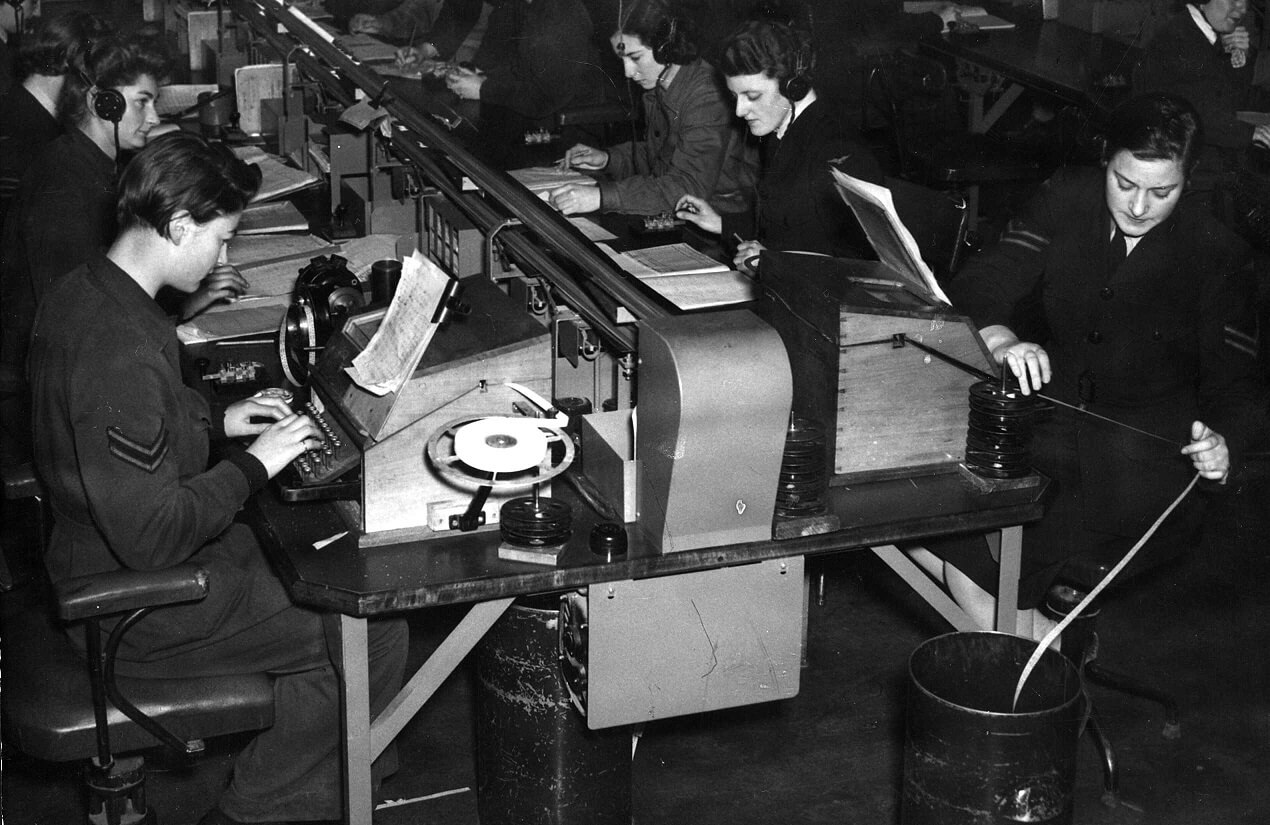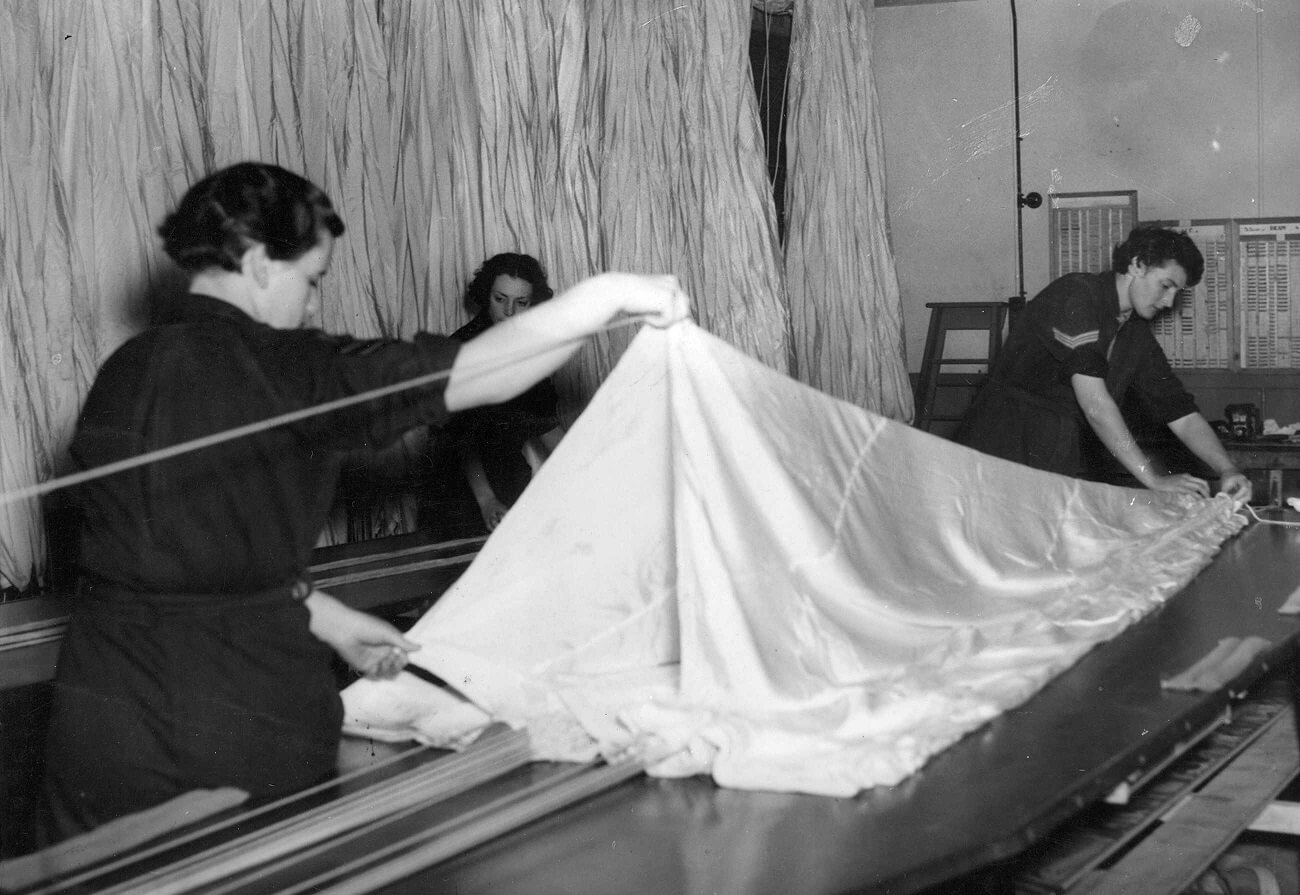The WAAAF was the largest of the three women's services. By the end of the war, about 27,000 women had enlisted. Women were posted to bases throughout Australia, but were never permitted to serve overseas, or in combat roles.
Against all expectations, the WAAF were ‘rapidly transformed from a motley collection of young women from different backgrounds (be it country or town) into an efficient, disciplined body, able to carry out orders without confusion.’
First girl in the Commonwealth to be attested and sworn in to the W.A.A.A.F., Miss Shirley Beckett, oath administered by Pilot Officer Taylor at No. 1 recruiting depot Melbourne.
Reproduced courtesy State Library Victoria
ACW’s (Aircraftwoman), Alma Warren and Dorothy Heitsch, working on an aircraft engine.
Reproduced courtesy State Library Victoria
These fabric workers knew to an inch or a yard the amount of material covering their aircraft.
Margaret Buick, WAAAF
ACW’s, Beryl McNeill and Nell Kinkaid, stretching fabric over the aileron of a Catalina flying boat.
Reproduced courtesy State Library Victoria
Aircraftwoman (ACW) Corporal Dorothy Trewin checking the instruments in the cockpit of a bomber aircraft.
Reproduced courtesy State Library Victoria
WAAAF armorers, Margaret Deal and Rosemary Kemp, installing a Vickers machine gun into an aircraft.
Reproduced courtesy State Library Victoria
ACWs Esme Coase, Joyce Gallen and Dorothy McIntosh, load practice rockets onto a Beaufighter.
Reproduced courtesy State Library Victoria
Women were a crucial part of the RAAF communications system. They staffed Radio Direction Finding Stations to guide aircraft home, large numbers were radio-telephone operators, and most of the telephone and teleprinter operators were WAAAF. The coastline of Australia was screened by radar, keeping operators on duty 24 hours per day.
WAAAF telegraphist, A.C.W. Nola Walton, from Brighton in Victoria.
Reproduced courtesy State Library Victoria
Women in the WAAAF working in a large telegraphic operating room.
Reproduced courtesy State Library Victoria
These women trained for several months, learning how to air, inspect and maintain the parachutes. After their final course, lasting two months, they could prepare a parachute ready for use in 30 minutes.
They worked under enormous pressure – a man’s life literally depended on their precision and care! Each parachute had to be aired and given a complete overhaul every two months.
Cpl. Ivy Benson and Betty Ali from Victoria and Dulcie Noble from South Australia folding parachutes.
Reproduced courtesy State Library Victoria

